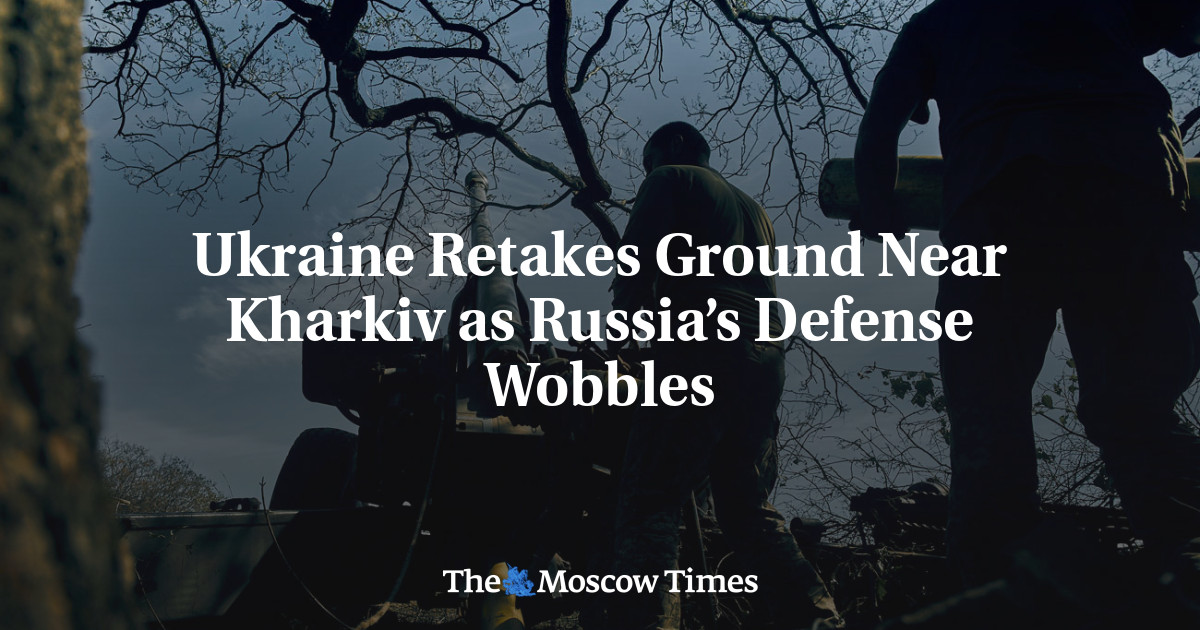
Russian forces appeared to be struggling to contain a Ukrainian counteroffensive around the northeastern city of Kharkiv on Thursday amid claims that Kyiv’s forces had advanced as far as 50 kilometers in a breakthrough involving tanks and artillery.
“During defense operations to recapture lost territory in the Kharkiv direction, since the start of the week, Ukraine’s armed forces… have penetrated into enemy’s lines by a depth of up to 50 kilometers,” Ukrainian Brigadier General Oleksiy Gromov said at a briefing in Kyiv, Reuters reported.
Unconfirmed footage shared by Russian Telegram channels appeared to show destroyed Russian armored vehicles in the area of the Ukrainian advance, as well as Ukrainian troops near Balakliya, a strategically important city with a pre-war population of 27,000.
General Gromov also said Ukraine had retaken about 700 square kilometers of territory in both the east and south of the country, according to Reuters.
If true, the speed of the Ukrainian advance near Kharkiv, Ukraine’s second-largest city, would make it the most rapid and successful attack by either side in the last five months of fighting, according to military analyst Rob Lee.
“[Russia’s] Donbas offensive was far slower and there weren’t any breakthroughs that led to a rapid and deep advance,” Lee tweeted Thursday.
While Russian and Ukrainian officials have remained tight-lipped about frontline developments, U.S. Defense Secretary Lloyd Austin appeared to praise the Ukrainian advance during a visit to Germany on Thursday while announcing another tranche of military support for Kyiv.
“We’re seeing the demonstrable success of our common efforts on the battlefield,” he said.
Russian forces sustained 76 equipment losses Wednesday, according to open-source analytical project Oryx, an estimated 70% of which happened in areas around Kharkiv.
Vitaliy Ganchev, the head of the Moscow-installed administration in the Kharkiv region’s occupied areas, said earlier on Thursday that Ukraine had failed to encircle Balakliya.
“The town is under our control,” Ganchev said, according to state-run news agency RIA Novosti.
But media reports emerged later that Russian forces had retreated from Balakliya, with video footage circulating of Ukrainian flags on buildings in the city.
The ultimate Ukrainian objective, some analysts predicted, could be Kupiansk, a town 76 kilometers northeast of Balakliya that serves as a logistics hub for Russian forces.
A photograph posted late Thursday by a pro-Ukraine Telegram showed a Ukrainian soldier on the outskirts of the town of Shevchenkove, about 35 kilometers from Kupiansk.
A Ukrainian seizure of Kupiansk, which straddles the Oskil River, would threaten Russian supply lines to troops based further south around the town of Izyum.
The Russian-installed regional authorities said Thursday that they were evacuating women and children from Kupiansk amid Ukrainian shelling.
“The city is under constant terror [from] Ukrainian rocket attacks that spare no effort to destroy its infrastructure,” said Ganchev, according to RIA Novosti.
In a bid to thwart the Ukrainian offensive, Moscow has reportedly deployed paratrooper units and aircraft around Balakliya, which had been left lightly defended after Russia bolstered its military presence in southern Ukraine in recent weeks.
“This week we have good news from [the] Kharkiv region,” Ukrainian President Volodymyr Zelensky said in his nightly address Wednesday, adding that “now is not the right time to name those settlements where the Ukrainian flag has returned.”
The mood among pro-Kremlin military bloggers on Telegram, who often post more accurate information about the situation on the front than official sources, appeared to be alarmed by the Ukrainian advance.
Pro-Kremlin blogger Romanov Lite predicted Thursday Russian forces will soon be forced to retreat from Kupiansk and that Ukraine will seize the city.
Others appeared more concerned about threats to the significant Russian troop concentrations around Izyum.
“The enemy attacked in several directions at once, aiming to cut off our Izyum group from the mainland. Their supply depends on two arteries on which the Ukrainian Armed Forces are concentrating their efforts,” Alexander Kots, a pro-Kremlin blogger and war correspondent, posted Thursday on Telegram.
“The situation in this area [around Kharkiv] remains very difficult but is not catastrophic.”
AFP contributed reporting.